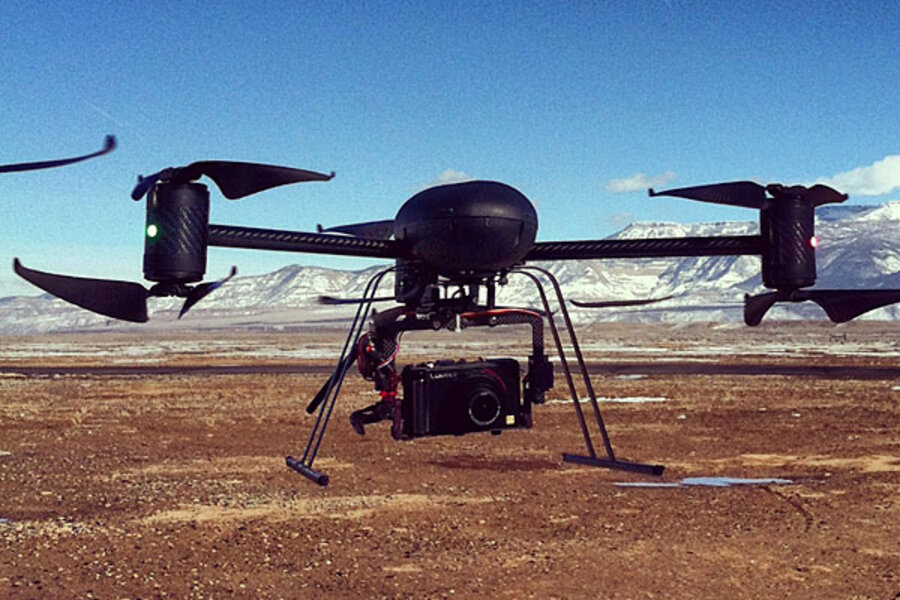Mystery drone near JFK airport: FBI seeks public's help in investigation
Loading...
| Washington
The news that a commercial pilot has reported seeing a drone loitering near his aircraft as he was preparing to land at John F. Kennedy International Airport on Monday raises some intriguing questions as unmanned aerial vehicles (UAVs) are poised to become increasingly common in America’s skies.
The Federal Aviation Administration (FAA) has confirmed that it has launched an investigation of the incident, in which the Alitalia pilot reported that “he saw a small, unmanned or remote-controlled aircraft while on final approach to Runway 31 Right at John F. Kennedy International Airport at about 1:15 pm,” according to an agency statement.
“The pilot did not take evasive action. The flight landed safely,” the FAA said.
The FAA goes to great lengths to make sure drones do not collide with piloted aircraft. Most drones used by law-enforcement agencies, for example, are not permitted by fly above 400 feet.
President Obama signed a bill last year directing the FAA to further open US airspace to drones for both public and private use.
The drone that was reportedly sighted on Monday was flying at 1,500 feet, according to the pilot and the FAA statement.
The New York field office of the Federal Bureau of Investigation issued a bulletin saying it is also investigating the incident and is seeking the public’s assistance in identifying and locating the unmanned aircraft and its operator on the ground.
“The unmanned aircraft was described as black in color and no more than three feet wide with four propellers,” according to the FBI statement.
Drones flown by law-enforcement agencies are often the same size. In addition to not permitting most of them to fly above 400 feet, the FAA generally mandates that the aircraft are not allowed to fly more than 15 minutes and cannot fly in greater than 15-knot winds. They also cannot be equipped with any weapons.
Even when law-enforcement agencies do use drones, public protests over privacy concerns have spurred some municipalities and state legislatures to prohibit their use for covert surveillance. That leaves use for such things as floods, fire, and missing-person searches.
This is not the first mysterious drone sighting on record in the United States. In 2007, for example, multiple protesters said they saw small robotic dragonflies hovering around their heads, The Washington Post reported. Universities across the country have Pentagon-funded labs that are developing such technologies.
The Pentagon’s futuristic Defense Advanced Research Projects Agency (DARPA), for one, is putting computer chips into moths before they become flying adults, in an effort to hatch them into healthy “cyborg moths,” the Post pointed out.
Mysteries aside, the number of permits that the FAA issued to organizations to fly UAVs has more than doubled, from 146 in 2009 to 313 in 2011. The bulk of the permits go to the US military.
The growth in drones is big business for the corporations who build them. Some 50 companies are developing roughly 150 systems, according to The Wall Street Journal, ranging from miniature flying mechanical bugs to “Battlestar Galactica”-type hovering unmanned airplanes.
The industry is expected to reach some $6 billion in US sales by 2016.







